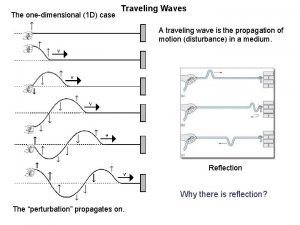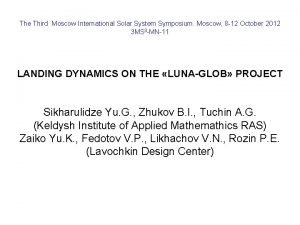The description of Moscow While traveling from Moscow





















- Slides: 21


The description of Moscow

While traveling from Moscow to St. Petersburg we met pupils of our own age on the train. They had just visited the capital of our country and wanted to discuss some interesting facts from its history, its present and future. We were not very experienced in many historical events on the city. We were very ashamed and decided to find the answers to many questions. The more we worked over the history of Russia, the more became interested in it. Our teaches think that our future depends on as greatly and we agree with them.

Let’s answer the first question: why was the city called Moscow? It borrowed this name from the river on the banks of which it is situated. But there is some more information about it. One of the most reliable is: the word “Moscow” came to us from the Slavic language. Many years ago the river was called Moscovъ or Moscovь that meant “swampy”, “wet”.

Moscow is believed to lie on seven hills: Borovitzkiy, Sretenskiy, Tverskoy, Treohgorniy, Lefortovskiy, Taganskiy and Vorobyovy Gory.

In ancient times the word “red” meant “beautiful”. It is a sacred place in Moscow. Red Square was established in the 15 -th century, under the rule of Ivan the third, and was called Trinity Square after the Trinity Cathedral, which used to stand on the site where St. Basil’s Cathedral stands now.


It is very comfortable to travel by the Moscow Metro. It is the fastest method of traveling in the city. Some stations are very attractive with their architecture. Many of the stations, particularly on the Koltsevaya line, are worth visiting at slow times in the day. It isn’t a subway, but why?

Kiyevskaya station Taganskaya station

It is one of the oldest roads in the city and was first mentioned as early as 1493, in connection with a fire that started here in the Church of St. Nicholas. Pushkin himself lived here with his wife in house number 53 (the building has since been turned into a museum dedicated to the poet) and Tolstoy resided on the adjoining Kaloshin Lane.


The Old Arbat has the reputation of being Moscow's most touristy street, with lots of entertainment and souvenirs sold. It is distinct from the New Arbat, a street running parallel to it and lined with Soviet skyscrapers made of steel, concrete, and glass.

Arbat at day and at night


You can admire two beautiful fountains: Friendship of nations and Stone Flower.

The All – Union Agricultural Exhibition was established in 1935. But today it is also a great place to have a rest and at weekends.


Kitai-Gorod is one of the oldest historical parts of Moscow. It joins the Kremlin from the east side, and Moscow river – from the south side. In the north it borders with Ryad, and in the north-east – with Old and New squares.

Kitai-Gorod was built up with stone constructions


 Do while loop adalah
Do while loop adalah Bac burnsville
Bac burnsville Traveling wave
Traveling wave Layered diagonal forward haircut
Layered diagonal forward haircut Verbals examples
Verbals examples Traveling salesman problem
Traveling salesman problem Traveling salesman problem
Traveling salesman problem Traveling salesman problem beispiel
Traveling salesman problem beispiel The traveling public and tourism promoters
The traveling public and tourism promoters A deer with a mass of 146 kg
A deer with a mass of 146 kg Traveling might satisfy your desire for new experiences.
Traveling might satisfy your desire for new experiences. Traveling salesman problem
Traveling salesman problem Infinitive as indirect object
Infinitive as indirect object Traveling nitrogen passport answers
Traveling nitrogen passport answers Which universal force can repel as well as attract
Which universal force can repel as well as attract Traveling salesman problem
Traveling salesman problem Aceleration
Aceleration Food traveling through the digestive system
Food traveling through the digestive system What thought haunted brian and caused him to panic?
What thought haunted brian and caused him to panic? A 2250 kg car traveling to the west slows down
A 2250 kg car traveling to the west slows down A helicopter is traveling at 40m /s
A helicopter is traveling at 40m /s Bitonic euclidean traveling salesman problem
Bitonic euclidean traveling salesman problem









































